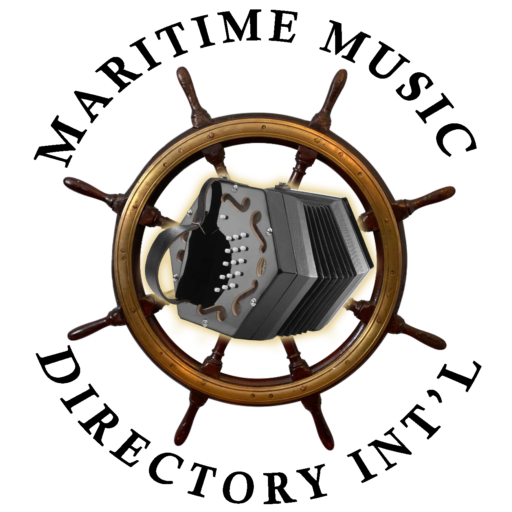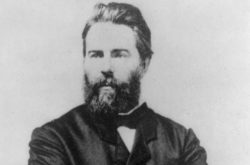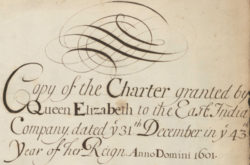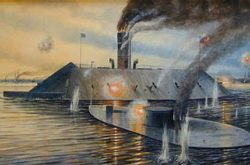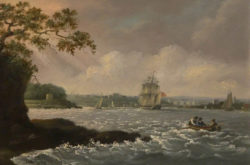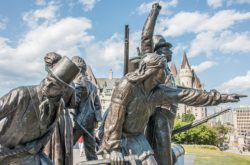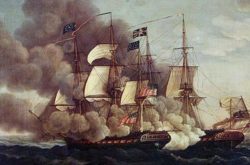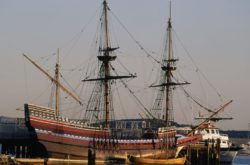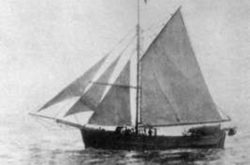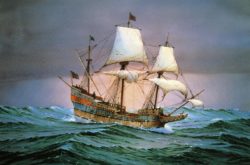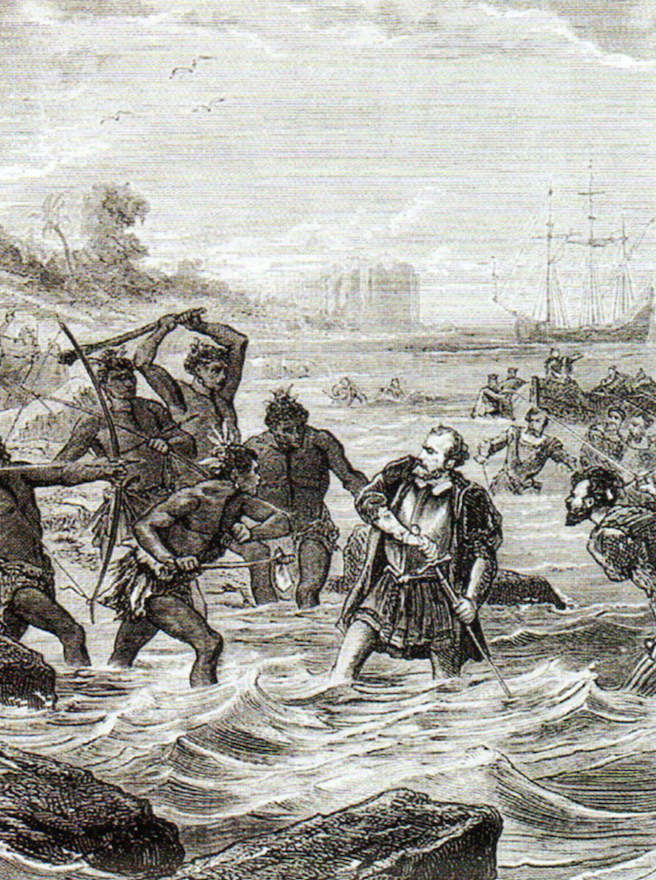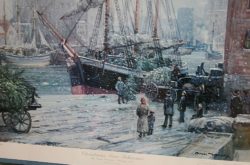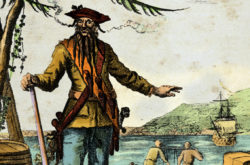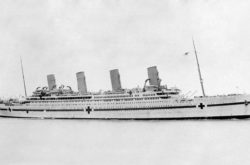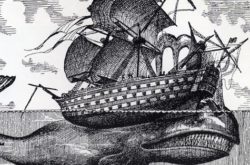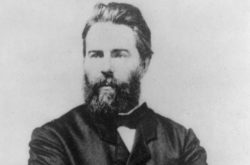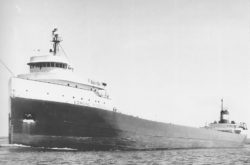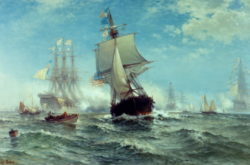Don Sineti Dies 5 Jan 2023
Our beloved Don Sineti crossed the bar last evening. He leaves an unfillable void in our world of chanteys and maritime music, and much more. His heart was as big as his voice and who can count the numbers of souls he touched. As one who brought him onto the Chantey staff at Mystic Seaport Museum over thirty years ago and had the chance to do numerous performances with him over the years, particularly for the Williams/Mystic program, I will treasure those special times. May we all now celebrate who Don was and what he gave to this maritime music community. Assistance is being accepted for Don’s substantial medical bills here: https://www.gofundme.com/f/donald-sineti-fundraiser
Herman Melville sails for the South Seas (1841)
On January 3, 1841, Herman Melville ships out on the whaler Acushnet to the South Seas. Melville was born in New York City in 1819. A childhood bout of scarlet fever permanently weakened his eyesight. He went to sea at age 19, as a cabin boy on a ship bound for Liverpool. Two years later, he sailed for the South Seas. The Acushnet anchored in Polynesia, where Melville took part in a mutiny. He was thrown in jail in Tahiti, escaped, and wandered around the South Sea islands for two years. In 1846, he published his first novel, Typee, based on his Polynesian adventures. His second book, Omoo (1847), also dealt with the region. The two novels were popular successes, although his third, Mardi Moby-Dick. The book flopped and was not recognized as a classic for many years. Click here to read the complete article on History.com.
Charter granted to the East India Company (31 Dec 1600)
On December 31, 1600, Queen Elizabeth I of England grants a formal charter to the London merchants trading to the East Indies, hoping to break the Dutch monopoly of the spice trade in what is now Indonesia. In the first few decades of its existence, the East India Company made far less progress in the East Indies than it did in India itself, where it acquired unequaled trade privileges from India’s Mogul emperors. By the 1630s, the company abandoned its East Indies operations almost entirely to concentrate on its lucrative trade of Indian textiles and Chinese tea. In the early 18th century, the company increasingly became an agent of British imperialism as it intervened more and more in Indian and Chinese political affairs. The company had its own military, which defeated the rival French East India Company in 1752 and the Dutch in 1759. Read the complete article on History.com.
USS Monitor Sinks (1862)
On December 30, 1862, the U.S.S. Monitor sinks in a storm off Cape Hatteras, North Carolina. Just nine months earlier, the ship had been part of a revolution in naval warfare when the ironclad dueled to a standstill with the C.S.S. Virginia (Merrimack)off Hampton Roads, Virginia, in one of the most famous naval battles in American history–the first time two ironclads faced each other in a naval engagement. (Note that while we try to limit these articles to feature tall ships from the Age of Sail, this development was signature to the end of the era.) Read the complete article on History.com.
Charles Darwin sets sail from England (27 Dec 1831)
British naturalist Charles Darwin sets out from Plymouth, England, aboard the HMS Beagle on a five-year surveying expedition of the southern Atlantic and Pacific oceans. Visiting such diverse places as the Galapagos Islands and New Zealand, Darwin acquired an intimate knowledge of the flora, fauna, and geology of many lands. This information proved invaluable in the development of his theory of evolution, first put forth in his groundbreaking scientific work of 1859, On the Origin of Species by Means of Natural Selection. Read the complete article on History.com.
War of 1812 Ends with the Treaty of Ghent
On this date, December 24, 1814, the War of 1812 ends. The Treaty of Peace and Amity between His Britannic Majesty and the United States of America is signed by British and American representatives at Ghent, Belgium, ending the War of 1812. By terms of the treaty, all conquered territory was to be returned, and commissions were planned to settle the boundary of the United States and Canada. Read the complete article on History.com.
Hythe folk singer Kerry Hearn died in a crash on the A20
On this date in 2014, Hythe folk singer Kerry Hearn died in a crash on the A20 in 2014. He was a member of the folk music band, Quidnunc. He left behind his loving wife, Mandy Hearn and musical partner Stewart Pendrill. Read the newspaper article here.
Continental Congress Creates a Continental Navy (1775)
On Friday, December 22, 1775, the Continental Congress creates a Continental Navy, naming Esek Hopkins, Esq., as commander in chief of the fleet. Congress also named four captains to the new service: Dudley Saltonstall, Abraham Whipple, Nicholas Biddle and John Burrows Hopkins. Their respective vessels, the Alfred, Columbus, Andrew Doria and Cabot, became the first ships of the Navy’s fleet. Five first lieutenants, including future American hero John Paul Jones, five second lieutenants, and three third lieutenants also received their commissions. Read the complete article on History.com.
Mayflower docks at Plymouth Harbor (1620)
On December 18, 1620, the British ship Mayflower docked at modern-day Plymouth, Massachusetts, and its passengers prepared to begin their new settlement, Plymouth Colony. The famous Mayflower story began in 1606, when a group of reform-minded Puritans in Nottinghamshire, England, founded their own church, separate from the state-sanctioned Church of England. Accused of treason, they were forced to leave the country and settle in the more tolerant Netherlands. After 12 years of struggling to adapt and make a decent living, the group sought financial backing from some London merchants to set up a colony in America. On September 6, 1620, 102 passengers–dubbed Pilgrims by William Bradford, a passenger who would become the first governor of Plymouth Colony–crowded on the Mayflower to begin the long, hard journey to a new life in the New World. Read the complete article on History.com.
Roald Amundsen becomes first explorer to reach the South Pole
On December 14, 1911, Norwegian Roald Amundsen becomes the first explorer to reach the South Pole, beating his British rival, Robert Falcon Scott. Amundsen, born in Borge, near Oslo, in 1872, was one of the great figures in polar exploration. In 1897, he was first mate on a Belgian expedition that was the first ever to winter in the Antarctic. In 1903, he guided the 47-ton sloop Gjöa through the Northwest Passage and around the Canadian coast, the first navigator to accomplish the treacherous journey. Amundsen planned to be the first man to the North Pole, and he was about to embark in 1909 when he learned that the American Robert Peary had achieved the feat. Click here to read the complete article on History.com.
Sir Francis Drake Sets Sail (1577)
English seaman Francis Drake sets out from Plymouth, England, with five ships and 164 men on a mission to raid Spanish holdings on the Pacific coast of the New World and explore the Pacific Ocean. Three years later, Drake’s return to Plymouth marked the first circumnavigation of the earth by a British explorer.After crossing the Atlantic, Drake abandoned two of his ships in South America and then sailed into the Straits of Magellan with the remaining three. A series of devastating storms besieged his expedition in the treacherous straits, wrecking one ship and forcing another to return to England. Only The Golden Hind reached the Pacific Ocean, but Drake continued undaunted up the western coast of South America, raiding Spanish settlements and capturing a rich Spanish treasure ship. Read the complete article on History.com.
The Mary Celeste is spotted at sea (1872)
The Mary Celeste, a ship whose crew mysteriously disappeared, is spotted at sea December 5, 1872. The Dei Gratia, a small British brig under Captain David Morehouse, spots the Mary Celeste, an American vessel, sailing erratically but at full sail near the Azores Islands in the Atlantic Ocean. The ship was seaworthy, its stores and supplies were untouched, but not a soul was onboard. Read the complete article on History.com.
Magellan Reaches the Pacific Ocean
After sailing through the dangerous straits below South America that now bear his name, Portuguese navigator Ferdinand Magellan enters the Pacific Ocean with three ships, becoming the first European explorer to reach the Pacific from the Atlantic. On September 20, 1519, Magellan set sail from Spain in an effort to find a western sea route to the rich Spice Islands of Indonesia. In command of five ships and 270 men, Magellan sailed to West Africa and then to Brazil, where he searched the South American coast for a strait that would take him to the Pacific. He searched the Rio de la Plata, a large estuary south of Brazil, for a way through; failing, he continued south along the coast of Patagonia. At the end of March 1520, the expedition set up winter quarters at Port St. Julian. On Easter day at midnight, the Spanish captains mutinied against their Portuguese captain, but Magellan crushed the revolt, executing one of the captains and leaving another ashore when his ship left St. Julian in August. Read the complete article on History.com.
Christmas Tree Ship Sinks (1912)
On this day (23 Nov) in 1912, the schooner ROUSE SIMMONS, better known as the Christmas Tree Ship, foundered in Lake Michigan near Two Rivers, Wisconsin. There were no survivors. The ROUSE SIMMONS was a 3-masted schooner built in 1868 by Allen, McClelland & Company of Milwaukee. She was 124 feet long with a 27.5-foot beam, and named after a well-known Kenosha merchant. She spent much of her career on Lake Michigan hauling lumber for Charles Hackley of Muskegon, Michigan. Read the complete article in the State of Michigan publication MLive.com.
Blackbeard Killed off North Carolina (1718)
Edward Teach, also known as Blackbeard, is killed on November 22, 1718, off North Carolina’s Outer Banks during a bloody battle with a British navy force sent from Virginia. Believed to be a native of England, Edward Teach likely began his pirating career in 1713, when he became a crewman aboard a Caribbean sloop commanded by pirate Benjamin Hornigold. In 1717, after Hornigold accepted an offer of general amnesty by the British crown and retired as a pirate, Teach took over a captured 26-gun French merchantman, increased its armament to 40 guns, and renamed it the Queen Anne’s Revenge. During the next six months, the Queen Anne’s Revenge served as the flagship of a pirate fleet featuring up to four vessels and more than 200 men. Teach became the most infamous pirate of his day, winning the popular name of Blackbeard for his long, dark beard, which he was said to light on fire during battles to intimidate his enemies. Blackbeard’s pirate forces terrorized the Caribbean and the southern coast of North America and were notorious for their cruelty. In May 1718, the Queen Anne’s Revenge and another vessel were shipwrecked, forcing Blackbeard to desert a third ship and most of his men because of a lack of supplies. With the single remaining ship, Blackbeard sailed to Bath in North Carolina and met with Governor Charles Eden. Eden agreed to pardon Blackbeard in exchange for a share of his sizable booty. Read the complete article here.
Britannic, sister ship to the Titanic, sinks in Aegean Sea
The Britannic, sister ship to the Titanic, sinks in the Aegean Sea on November 21, 1916, killing 30 people. More than 1,000 others were rescued. In the wake of the Titanic disaster on April 14, 1912, the White Star Line made several modifications in the construction of its already-planned sister ship. First, the name was changed from Gigantic to Britannic (probably because it seemed more humble) and the design of the hull was altered to make it less vulnerable to icebergs. In addition, it was mandated that there be enough lifeboats on board to accommodate all passengers, which had not been the case with the Titanic. Read the complete article on History.com.
Whaleship Essex Sunk by Sperm Whale
The American whaler Essex, which hailed from Nantucket, Massachusetts, is attacked by an 80-ton sperm whale 2,000 miles from the western coast of South America. The 238-ton Essex was in pursuit of sperm whales, specifically the precious oil and bone that could be derived from them, when an enraged bull whale rammed the ship twice and capsized the vessel. The 20 crew members escaped in three open boats, but only five of the men survived the harrowing 83-day journey to the coastal waters of South America, where they were picked up by other ships. Most of the crew resorted to cannibalism during the long journey, and at one point men on one of the long boats drew straws to determine which of the men would be shot in order to provide sustenance for the others. Three other men who had been left on a desolate Pacific island were saved later. The first capture of a sperm whale by an American vessel was in 1711, marking the birth of an important American industry that commanded a fleet of more than 700 ships by the mid 18th century. Herman Melville’s classic novel Moby Dick (1851) was inspired in part by the story of the Essex. Read the Complete article on History.com.
Moby Dick First Published (1851)
Moby-Dick is now considered a great classic of American literature and contains one of the most famous opening lines in fiction: “Call me Ishmael.” Initially, though, the book about Captain Ahab and his quest to catch a giant white whale was a flop. Its author, Herman Melville was born in New York City in 1819. As a young man, he spent time in the merchant marines, the U.S. Navy and on a whaling ship in the South Seas. In 1846, he published his first novel, Typee, a romantic adventure based on his experiences in Polynesia. The book was a success and a sequel, Omoo, was published in 1847. Three more novels followed, with mixed critical and commercial results. Melville’s sixth book, Moby-Dick, was first published in October 1851 in London, in three volumes titled The Whale, and then in the U.S. a month later. Melville had promised his publisher an adventure story similar to his popular earlier works, but instead, Moby-Dick was a tragic epic, influenced in part by Melville’s friend and Pittsfield, Massachusetts, neighbor, Nathaniel Hawthorne, whose novels include The Scarlet Letter. Read the complete article on History.com.
Cargo ship suddenly sinks in Lake Superior (1975)
On November 10, 1975, the SS Edmund Fitzgerald sinks in Lake Superior, killing all 29 crew members on board. It was the worst single accident in Lake Superior’s history. The ship weighed more than 13,000 tons and was 730 feet long. It was launched in 1958 as the biggest carrier in the Great Lakes and became the first ship to carry more than a million tons of iron ore through the Soo Locks. Read the complete article on History.com.
John Paul Jones Sails to Raid British Ships (1777)
On November 2, 1777, the USS Ranger, with a crew of 140 men under the command of John Paul Jones, leaves Portsmouth, New Hampshire, for the naval port at Brest, France, where it will stop before heading toward the Irish Sea to begin raids on British warships. This was the first mission of its kind during the Revolutionary War. Read the complete article on History.com.
